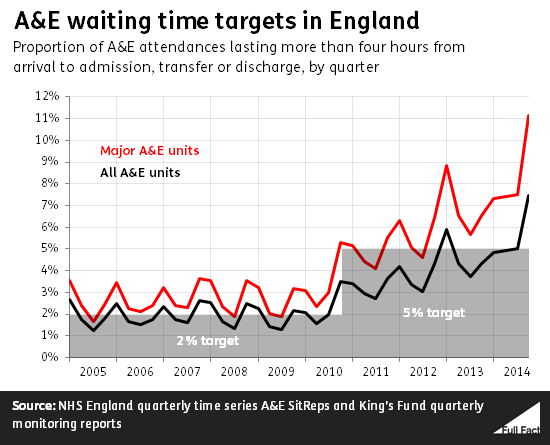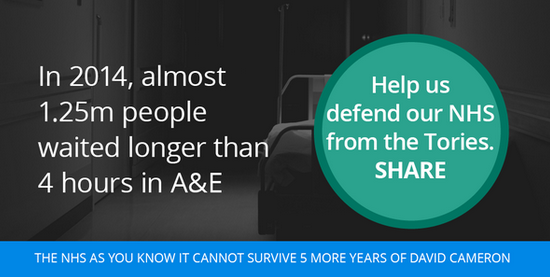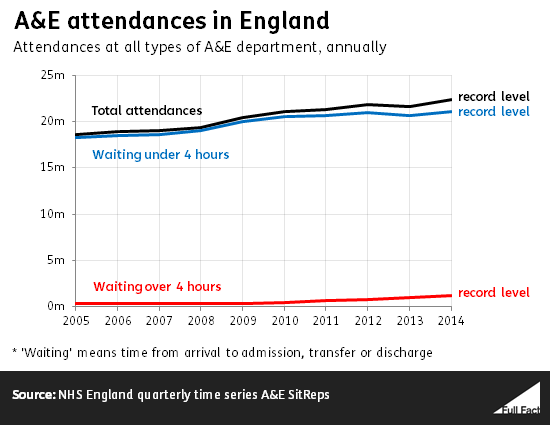Factcheck: The A&E waiting game
"A&E waiting is worst for a decade".
BBC News, 6 January 2015
This is right: figures published this morning showed that in the last three months of 2014, less than 93% of attendances were seen within four hours. That's the lowest for any three-month period since 2004.
Since 2010 the NHS in England has had a target that 95% of patients be seen within four hours at A&E. In practice that means from the time they arrive to the time they are either admitted for treatment, transferred elsewhere or discharged.
But both Labour and the Conservatives took to Twitter with a different side to the story—neither of which was particularly enlightening. Here is Labour:
Join 72,953 people who trust us to check the facts
Sign up to get weekly updates on politics, immigration, health and more.
Subscribe to weekly email newsletters from Full Fact for updates on politics, immigration, health and more. Our fact checks are free to read but not to produce, so you will also get occasional emails about fundraising and other ways you can help. You can unsubscribe at any time. For more information about how we use your data see our Privacy Policy.
Meanwhile Health Secretary Jeremy Hunt took a different tack (and similarly in several other tweets):
Both claims are right, and neither is meaningful. The number of people attending A&E in England in 2014 was at record levels, as was the number seen within four hours. As was the number seen in over four hours.
People who are admitted for treatment spend on average three and three quarter hours in A&E (median), while people who aren't spend just under two hours.
This is only a broad picture, and the King's Fund has analysed some of the drivers of trends in attendances and waiting. Even so, claims about 'record' levels aren't always that useful, when viewed in context.



